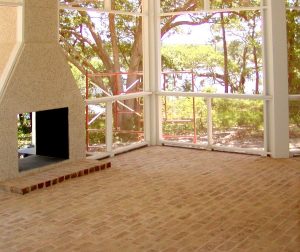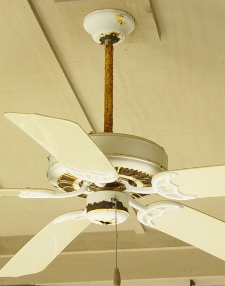03 Sep November-December 2010
Willis Sinclair Homes
“The Lowcountry’s Premier Custom Home Builder”
Personalized Full-Service Construction
Fixed Price and Cost Plus Contracts

One of our younger readers
24 Gabriel Road
Lodge, South Carolina 29082
843 846 2500

November/December 2010
Is this really a good time to build, remodel or add on?
It is no secret the economy is not doing too well today. Things might be improving, maybe. No one knows for sure what the future holds, however.
Certainly, the number of houses being built in the Lowcountry is down – dramatically down.
As often happens when there is bad news, there is also some good news. The construction industry is down, but that means good subs are available. Some of the less talented subs are no longer working in the construction industry, but the good ones are.
Overall costs are down a bit. They may not be down as much as you would think because a number of lumber mills have also shut down, but generally, material costs are good.
If you are considering adding on to your home or remodeling, we would be happy to help you decide what would work. Once you decide that, we will price it out for you. No cost or obligation to you, of course.
If you want to move some of your funds from dollars to things with intrinsic value, you might want to look at existing homes. In today’s climate, sometimes you can get very good deals on houses.
The homes may need cleaning up, repairing, or renovating, but you know a company that is very good at that: Willis Sinclair Homes. We will even be happy to look at a home you are considering and give you an estimate before you buy.
Call us: we can help. 843 846 2500.
 From the desk
From the desk
of Bill Burdick …
Young Will Ponds, Willis’ youngest, is proofing our October newsletter. He had quite a few things to say about it, but unfortunately (or maybe fortunately for Will), we could not understand him.
It looks like we had another good hurricane season here in the Lowcountry: no hurricanes.
We will have hurricanes here someday, however, and it is very important you have a well built house. The homes we build exceed the residential building code requirements.
As our subcontractors build our homes, we are there, watching and checking every step of the way.
Milder weather is here. Have you considered adding a porch or deck to enjoy it? Inside, we discuss some ideas that might help you make a good decision about them.
As always, call us. We will be happy to discuss your ideas and help you solidify them. Of course, there is no charge and no obligation for this service.
All of us at Willis Sinclair Homes wish you all the best this holiday season.
Bill
Vice President, Willis Sinclair, Inc.
Professional Engineer, Retired
843 846 2500
Decks and Porches
Here in the Lowcountry, porches and decks are wonderful places to enjoy the great outdoors. You should give them strong consideration if you are planning to build here. You could also consider adding one to your existing home.
Certainly in the dead of summer, you may not get much use from either, but much of the rest of the year, they could be a place to relax and enjoy the beautiful outdoors.
At first blush, a deck or porch is a simple concept. There are a number of issues to consider, however, when you plan one.
Flooring
One of the common areas between porches and decks is the flooring or decking. Traditionally, decking is made of wood – usually pine here in the Lowcountry. Today, we have pressure treated pine which withstands the weather much better than untreated pine or other woods. It also resists termites, a very important consideration.
Pine decking (treated or untreated) can be stained or left natural. In either case, they really should be periodically treated with a sealer. Of course, pine decking can also be painted. Pine decking is one of the least expensive choices in porch and deck flooring.
Pine decking is available in decking boards (with rounded edges) and tongue and groove.
Ipe (usually pronounced ē-pay) is an exotic Brazilian hardwood. Ipe is a reddish color when it is new and weathers to a gray color within a year or two. It is available in decking boards or tongue and groove.
Ipe is a unique wood in many ways. It won’t float because it is so dense. It also won’t support combustion (burn) by itself. It can be burned if it is placed in a hot fire, but will not continue to burn if you pull it out of the fire. Ipe generally lasts a long time (some claim 100 years) because it is so hard (about 5 times as hard as pressure treated pine1).
There are downsides to IPE also. It is expensive and considered by some groups to be an endangered species. It is also difficult to work with because of its weight and hardness.
Synthetic decking is also available. In the past, synthetic decking has not held up well in the intense sunshine we have here along the South Carolina coast. Today, with UV inhibitors and other techniques, the lifespan of synthetic decking seems to be greatly improved.
Synthetic decking comes in a number of colors and has a texture so it is not slippery when wet. The texture also provides a home for mildew so even though routine painting or sealing is not needed, cleaning with a pressure washer is often needed yearly.

A brick porch built over a raised concrete slab.
Synthetic decking is a petroleum product so its price fluctuates with the price of oil. (At least it goes up when oil goes up. For some reason, it does not seem to come down when oil prices come down…)
Ipe and synthetic decking look much better if they are installed with hidden fasteners. These fasteners hold the decking from the back so you see no screw holes on the top side. Of course, you can use hidden fasteners on pine also. Hidden fasteners cost about $1 per square foot of decking. It is also more difficult (i.e. expensive) to install hidden fasteners than face screws.
If you want a truly maintenance free deck, you might consider a raised concrete slab with brick, stone, tile or just concrete.
Brick, stone and tile decking is not a low cost choice, but it is beautiful and requires no maintenance other than sweeping.
Screening
Another decision you must consider is to screen your porch or not. Here in the Lowcountry, mosquitoes and and other bugs can get very aggressive. Without screening, you are limiting the times of the year when you can use your porch comfortably.
We also have a little creature called a “no-see-um” (gnat) which is about 90% mouth. They are tiny, but really bite. You can get a “no-see-um’ screening which is usually 20 x 20 (20 strands per inch in both directions). Although it does cut down on the gnats, it also cuts down on the breeze and sunlight.
Normal screening will eliminate mosquitoes, and slow down gnats, but it will not eliminate them.
Screening material can be fiberglass or metal (usually bronze). Fiberglass is much less expensive, but predictably has a shorter life.
Fans, Outlets and Hose Bibs
Three other items you may want to consider for your porch or deck are fans, electrical outlets and hose bibs.
A fan will keep air moving and make your porch pleasant. On an open porch, it will make it more difficult for insects to bother you. On a screened porch, it will keep the air moving. Be sure you get a wet location fan for your porch. If you don’t, your fan will likely rust and the blades droop within a year or two.

An interior fan on a porch. Note the rust.
An electrical outlet is handy if you want to put anything electrical on the porch such as lamps or televisions. A hose bib makes it convenient to clean the porch particularly if is brick or tile.
Ceiling
Your porch can have a ceiling or just be open rafters. If you add a ceiling, then that gives you the option for built in speakers and lights. Exposed rafters look nice, but are more difficult to paint and keep clean. Hiding wires and electrical boxes for lighting is also more challenging.
Code Issues
Porches and decks have to have railings if the porch or deck is more than 30 inches above the ground. There has to be some sort structure below the handrail so a 4” sphere cannot pass through. On open porches we use spindles and on screened porches, we often use ½” stainless steel mesh.
If you are thinking about adding a porch or deck, call us. We will help you design exactly what you want and give you a firm price on it.
http://www.ipedepot.com/compare.htm
Willis Sinclair Homes, where ‘Built Right’ is the only ‘good enough’ we understand.

Call Us
843 846 2500





No Comments